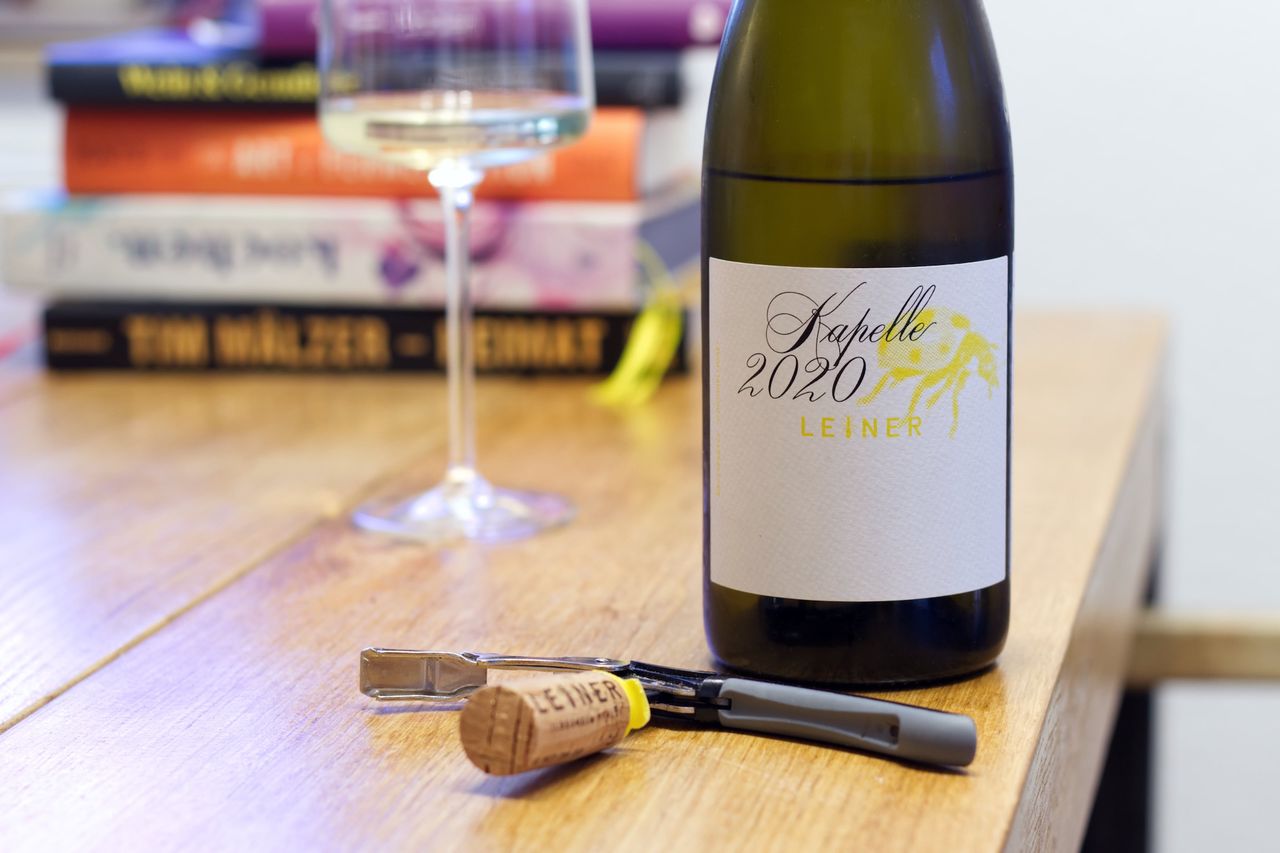Leiner - Kapelle Pinot Blanc 2020
To kick off the new year, we have a highlight from last year: a bottle of 2020 Kapelle Pinot Blanc from Weingut Leiner.

The new year starts with a wine that, for me, still belongs a bit to the last year. Not the vintage, which is 2020. However, we discovered this wine at the house fair of the wine merchant Kreis, Perspektive Wein, at the beginning of November, precisely in the last year. It was not the only discovery, so in the coming time, there will be wines here and there that landed directly in my shopping cart right after the fair. One reason why the fair is so great is that almost always the person behind the counter is the winemaker himself. This sometimes leads to communication barriers due to our lack of knowledge of the French language, but fundamentally allows for really exciting conversations. Sunday was quite crowded according to what people said, but we were there on Monday, and there was enough space and time for conversation. A nice side effect was that, in addition to a lot of other industry professionals, we also ran into Christoph from Originalverkorkt and Udo from SchmelzPerlageBodensatz and could say a brief hello. And on top at least we seemed competent enough that we were often asked if we were also professionals. No, just ambitious amateur drinkers.
Simone Leiner stood with her wines somewhat apart from the larger tasting hall in the entrance area, along with other wineries from the Palatinate. In addition to the Handwerk line wines we had tried a few years ago and an alcohol-free grape-herb-tea fizz, she had exactly this wine with her. And after climbing the Weissburgunder ladder from Handwerk over Kalkboden to the Kapelle, the only question left was whether it was great or really great. The Leiners make biodynamic wine in the southern Palatinate around the Kalmit. That’s where the grapes for the Kapelle grow too, which, however, cannot be called Kalmit because of the Landwein classification. The vines stand on limestone-infused clay soils and are hand-harvested. The must goes unfiltered into new half-piece casks of local oak and stays there for 15 months on the lees before being bottled, also without filtering.
And right at the first sniff, I’m back at the booth and know why I had to have this wine. There’s a mix of grapefruit, natural radler (I think its called shandy in english), and yellow fruits in the nose. Creamy and super fine. This is meditation wine, but not I am meditating on the wine, here the wine meditates itself. It’s so calm and at the same time so deep. The mouthfeel places itself somewhere between velvety creaminess and juicy minerality, and when the wine disappears, it pulls another brush of honey over the tongue. And it sticks there. Forever. That’s damn good and at least the best Weissburgunder of the year. Which honestly has limited significance in this first weeks of January, but I’m pretty sure it will defend the title for a long time.
The Kapelle is not a loud wine. A bit less on the second evening even than on the first. There are elderflowers, a bit of glue, and a few yellow apples. Add stone and ripe pears. Everything together and all mixed up, and all so impressively gentle. It forces you to pay attention, and so the meditating wine automatically becomes a meditating wine drinker. And then the mouthfeel. This velvety, ultra-long creaminess, this elegance, the very fine but still robust structure. I don’t know exactly what it is, but somehow it completely grabs me right now. As quiet as the wine is, it stays on the tongue for so long. Clearly open and at the same time a complete puzzle. How can something be so calm and yet so intense at the same time? So gentle and at the same time have so much energy. And that, of all people, from me, who writes about most wines, praising the edge in them. Here, there is no edge, not even a corner or a small stone. No friction at all, and yet it completely stirs me up. A truly great Weissburgunder.
Related Posts
- Kalk and Stein and Sand and Kiesel
- Odinstal - 350 N.N. Weissburgunder 2018
- Ökonomierat Rebholz - Im Sonnenschein Weisser Burgunder 2016